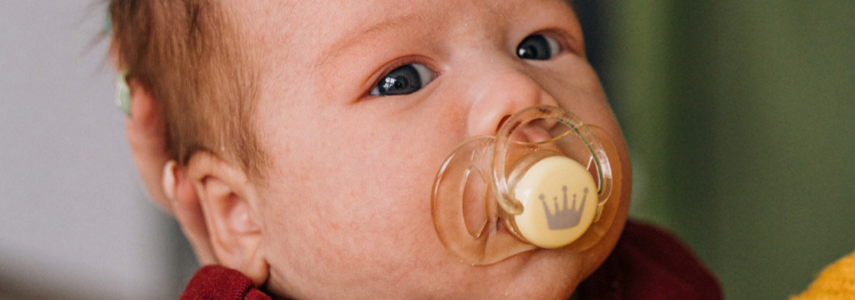One of the most common habits in children, from the first months after birth, is to put their finger in their mouth. A habit that begins when you are small and sometimes lasts for more than a few years. However, there is no perception of how much this childhood practice can be the cause of serious oral health problems.
Children and finger in mouth. Here’s what can happen

We have already seen in the past how the use of pacifiers can cause problems for children’s dental health if used in the long term. Now, let’s deal with the bad habit of the finger in the mouth instead. For children it is almost a mania and there is no need to worry. The finger in the mouth is a natural activity, normal for our little ones who in this way feel safer and more comforted and, often, manage to calm down and fall asleep. The finger in the mouth also helps the child develop the muscles essential to be able to feed. Surely there are also advantages but you have to pay close attention. Like that of the pacifier, in fact, this custom must also be limited to a short period of life. If adopted in the long term, it can cause unpleasant effects for the oral cavity. According to studies carried out by some pediatric dentistry experts, the suction force of a child has a strictly proportional relationship with the damage that can be caused to the oral cavity. In fact, it has been shown that this phenomenon can increase the possibility of growing with deformed teeth. When a child’s permanent teeth begin to erupt, thumb sucking can prevent proper growth and negatively affect proper alignment.
Finger in mouth. The risk for the dental arches
A very common question in these cases is: after how long should it be necessary to prevent or limit the use of the finger in the mouth of one’s children? Normally the maximum age indicated to start limiting this practice is three years. Over 2-3 years the habit can lead to serious consequences as we have seen. Our skeletal conformation of the face is made up of two bones, the upper jaw and the mandible. Many children have a good aesthetic balance between the two bones. However, in one in three children, the lower jaw grows less than the maxilla. In other cases, however, even if less frequent, the growth of the upper part is less than that of the jaw. This speech is connected to the habit of the finger in the mouth because, if the child has an overgrown upper jaw compared to the mandible, sucking the finger for a prolonged time can stimulate the growth of the upper jaw and consequently deform the upper arch. Furthermore, sucking the thumb for too long can be the cause of another defect or at least accentuate it: that of the open bite. The latter occurs when, joining the lower and upper arches, there is a space between the front teeth. By inserting the thumb into the space between the front teeth, the upper arch widens more and more and the open bite gets worse, preventing the correct closing of the mouth. Finally, in addition to those we have already analyzed, the finger in the mouth can cause three other problems:
- cosmetic problems;
- speech defects;
- increased risk of caries.
Here are some useful tips to limit or eliminate this bad habit

The finger in the mouth, as we have seen in the previous paragraphs, can become a serious problem for the dental health of our children. So how can we limit this widespread practice and gradually eliminate it? Here are some useful tips to succeed in what can sometimes be considered a real business.
- Pedagogical persuasion. Patiently and consistently make the child aware that putting his finger in his mouth is simply a bad habit;
- Putting your hands in your mouth is unhygienic. We need to provide the child with valid and original reasons to make him stop. Sometimes even using “white lies”, such as the buck teeth excuse;
- Give him alternatives. Inventing different habits that you can maintain before bedtime and that can make him stop wanting to put his finger in his mouth;
- Avoid scolding your child for thumb sucking. A gesture that for our children becomes almost automatic and scolding him badly can be counterproductive;
- Use gloves as a possible deterrent. If the baby feels the difference in taste and touch when he brings his finger to his mouth, he may be discouraged from doing so because he does not enjoy it as much;
- Use tape or plasters. This method makes it difficult for the child to put his fingers in his mouth.
- Trust a dentist. A fixed orthodontic appliance can be used to physically prevent the child from placing the finger in the mouth.
If, on the other hand, the child exceeds a certain age range, it is advisable to consult a specialist. If you find yourself in this situation, come and visit us in our Sanident dental center in via Settembrini, 6, in Milan. Book now, for your child, a first visit without obligation.









